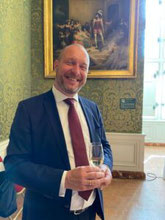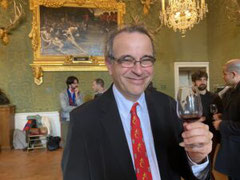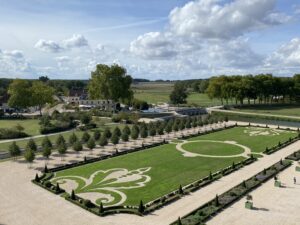- Home
- Renu's Music Room
- Diego Gadenz
- Jazz-Bossanova Quartet
- Hari Prasad Paudyal & Hélène Philippart,
- Cacao Jazz Quintet
- Michel Farescour and Alen Farescour
- Duo Esterika Sefarati
- Jean-Yves Poupin and Stephane Fisch
- Dr. Hariprasad Paudyal
- Kildonan group
- Chizuko Hayashi
- Duo Albedo
- John, Pierre-Antoine and Bruno!
- Adriano Bassanini
- Pascal Rossy
- Yara trio
- John Intrator and Jean-Michel Pache
- Ustad Ikhlaq Hussain
- Poems
- To my own darling sister, 2
- The Cleavage Conundrum
- Happiness is...
- Wimbledon White
- Never on a Saturday
- With a Little Help from my Friends
- Shuttered Wine
- See you soon
- Swiss Alps: To go, or not to go
- Apartment in Paris
- Till we meet again
- Ode to Vana
- Twenty twenty-two
- The Oscars! UNDP 2021 Reunion Greece
- Ode to the Road
- Over the Moon
- For Roy
- Even Stephen
- Birthday poem
- The New You
- Nichts passiert
- Divonne Book Club
- Ingrid’s Day
- Daddy
- Dad
- Mom
- Calling It a Day
- To my own darling Sister
- A Walk in the Park
- Wine
- Postcard from the Sky
- Wine & Friendship
- Sublime REDS from a region famous for whites
- Bubbles from the Hills of Veneto
- PUGLIA : A gastronome’s delight
- Postcard from Kohima
- Luckily, more than ‘Once in a Lifetime’!
- From a weekend getaway to an award-winning vineyard
- At the Khushwant Singh Litfest: A Glass of Wine with…
- Wines of Lebanon
- How Europe’s highest vineyard ended up with 500 owners and Indian connections
- Wine Women & Words
- Film - Jazz
- Saas-Fee Stories
- This & That
- When will our Beloved Thermes in Divonne-les-Bains Reopen?
- Leaders, Correas and Mothers
- A Visit to Château de Chambord & The Loire Valley
- Hikes
- Summertime with the Cornell Club of Switzerland
- Discover the enchanting Talis music festival in Saas-Fee Switzerland
- Chefs from Vana Retreat in Dehradun take their expertise to Switzerland
- Combine Swiss ingenuity with an alpine cave, and you get this.
- Basel Fasnacht
- Photo Gallery
- Contact
A Visit to Château de Chambord & The Loire Valley

Despite the constant October rain in Paris, the continued silent spread of the coronavirus and the not so convenient dates, it was hard to resist the invitation from Christie’s to participate in a press visit to Chambord in the Loire region of France. There were enough journalists who showed up with umbrellas and gloomy faces on the morning of 1 October at the Denfert-Rochereau metro stop to climb into a bus parked across the street at Monceau Fleurs, a chain dotting the Parisian landscape selling flowers, possibly from all continents.
Appropriately masked through the two-hour drive, most of us chose to grab a power nap rather than engage in conversation with sleepily distanced neighbours. Suddenly, a flash of sun! We’re jerked out of our stupor, rub our eyes to make sure that we are awake, not dreaming and not thinking that we have ended up at French Disneyland.

No, this is the real thing. A real, true to life Château, one of many dotted around in this area of France, each with its own histories of lives, loves and losses. The largest château in the Loire valley, Chambord (pictured) was built between 1519 and 1547 by Francis I as his hunting lodge, while his royal residences were at neighbouring Château de Blois and Amboise. It is considered an exceptional work of art, blending traditional medieval form with Renaissance structures and was recognised as a UNESCO World Heritage site in 1981. Even Disney could not have dreamed up 11 kinds of towers, three types of chimneys, without symmetry, framed at the corners with massive towers.
Most impressive is the surrounding 5,440 hectares of forest enclosed within a 32-kilometre wall. This is the basis of the partnership we are about to discover, a partnership with the world of wine. The Chambord forest offers a limited edition of 100 oak barrels per year for the wine trade. The barrels are produced according to time-honoured methods. The oak is split into wood staves by hand, left to mature for two years in the open air on the estate and transformed into barrels by master craftsmen. These barrels, in the format for Bordeaux (225 litres) or Burgundy (228) litres, are supposed to endow the wines with “structure, length, finesse, freshness and complexity.” The manufacturing and toasting of the barrels, as requested, is undertaken by the company Cadus in Burgundy, which commits to planting a tree for every barrel delivered.
As an aside, Cécile de Saint Venant, Director of Communications at Chambord, informs me that they have been planning a twinning arrangement between Chambord and Udaipur in Rajasthan, because of common points of architectural interest such as the City Palace, and they are working towards an exhibition in Udaipur in 2022. She spoke about a Tamil movie shot at the Château and encourages visitors from India to organise pre-wedding events at the Château de Chambord!

At a lunch buffet, wines from the Hospices of Beaune are offered for tasting. The Volnay-Santenots being the finest white and the Hospices de Beaune, premier cru, Pinot Noir, 2015, being the best of the reds and from a great year.
Christie’s is there in full force, with Edwin Vos, Director and International Head of Wines and Spirits, travelling all the way from Amsterdam, who convinces me to attend the annual charity wine auction in Beaune in mid-November. Now not possible because of French coronavirus lockdown rules. While Pablo Huarte, head of Sales for Continental Europe assures me of their support from Paris.ules. While Pablo Huarte, head of Sales for Continental Europe assures me of their support from Paris.

The most moving presentations were by Dr François Poher, director of the Hospices de Beaune and Ludivine Griveau, a senior manager, who described the history of the hospices founded in 1443 as a hospital with free services to the poor. While the original main building, with unique northern Renaissance civic architecture and its treasure trove of panel paintings, is now a museum, hospital services are delivered in new neighbouring buildings.
The Domaine des Hospices de Beaune is a non-profit organisation which owns about 61 hectares of donated vineyard land, much of it classified as Grand Cru or Premier Cru. At an annual auction, run by Christie’s since 2005, the wine is sold to professional and private buyers, fetching high prices because of the charitable nature of the event. Ludivine informs me that they were planning to go to India this year with their wines and to Ahmedabad the following year. While that is on hold for now, they will definitely make it in the future.
Meanwhile, the youngest member of the gathering is gurgling in his mother’s arms. This is three-month old Gaspard with his mom, Magdalena, an Austrian-Spanish interpreter by profession, but here as the spouse of Jean d’Haussonville, director of the Château de Chambord, who has just given an exposé on the château, its precious forests and the unmatchable barrels produced with its oaks.

On our return to Paris, the bus now has chatty, smiley, friendly journalists, enthralled by the visit and learning about this mutually enriching partnership between the Château de Chambord and the Hospices de Beaune. Adding to the delight were four wine glasses inscribed with the Château logo bought by Carole Gaillard, a wine consultant from Paris and a Dame Chevalier de l’Ordre des Coteaux de Champagne! Equally exhilarated was young Thibault Simonnet, a journalist from Le Bien Public in Beaune, so engrossed, he never could find time to tie his shoelaces. A memorable trip indeed!